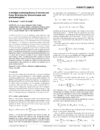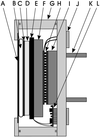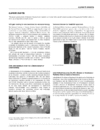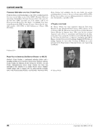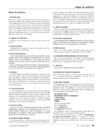issue contents
January 2002 issue

Cover illustration: High-resolution channel-cut monolithic monochromator used as an energy-selective device for studying lattice spacings of single crystals, see Obaidur, pages 28-35.
facility information
lead articles
This article, now updated, was originally published in Indian J. Phys. [(2001), A84, 1–11] which in turn was based on the Professor K. Banerjee Birth Centennial Medal lecture of the author given in Calcutta in September 2000.
research papers
A unfied approach is presented for calculating magnetic and natural dichroism (both circular and linear) in (spin-resolved) photoemission and absorption, valid in the many-body case and for extended systems. The reduction of this scheme to the independent particle approach describes these spectroscopies within the framework of multiple-scattering theory.
The 57Fe Mössbauer wavelength standard is used to measure the lattice constants of Al2O3, as well as the wavelengths of the 151Eu, 119Sn and 161Dy Mössbauer radiation.
Extended X-ray absorption fine structure experiments can be performed at extremely high energies (>50 keV) by using multiple-order reflections from the monochromator. Examples show that, notwithstanding the considerable core-hole broadening of the spectra, quantitative data can be extracted both from bulk and diluted samples.
Since synchrotron radiation has no characteristic (wavelength) spectral lines, a (+, +) high-resolution channel-cut monolithic monochromator has been introduced as an energy-selective device for the study of the lattice spacing of single crystals. Using two types of monolithic monochromator, two systems are proposed and applied to the high-precision measurement of the lattice spacing of Si wafers. The system can be applied for a fast and precise measurement of the lattice-spacing changes due to the doping in Si, GaAs and other single crystals.
The 49 × 86 mm 28 Mpixel detector discriminates single X-ray photons, has a large dynamic range, and a computer-controlled readout system that allows multiple pixel binning schemes and flexible operation in time-resolved experiments.
Compact high-power absorbers and diamond windows have been tested and installed on undulator-based ESRF front ends. The absorber has been tested at a peak power density of 1200 W mm−2 at normal incidence.
current events
Free 

Free 

Free 

Free 

Free 

Free 

Free 

international union of crystallography
Free 



 journal menu
journal menu


















